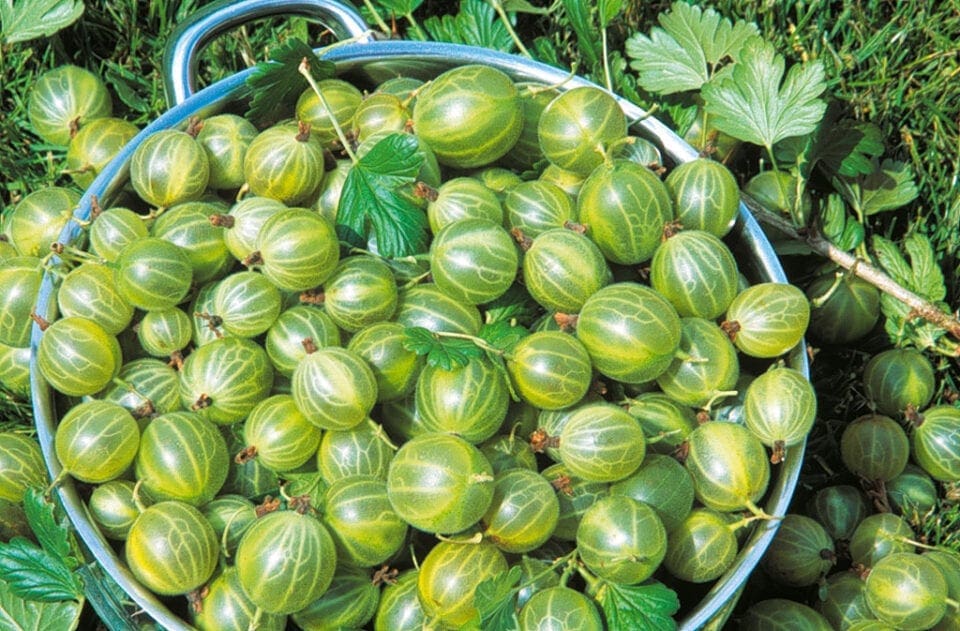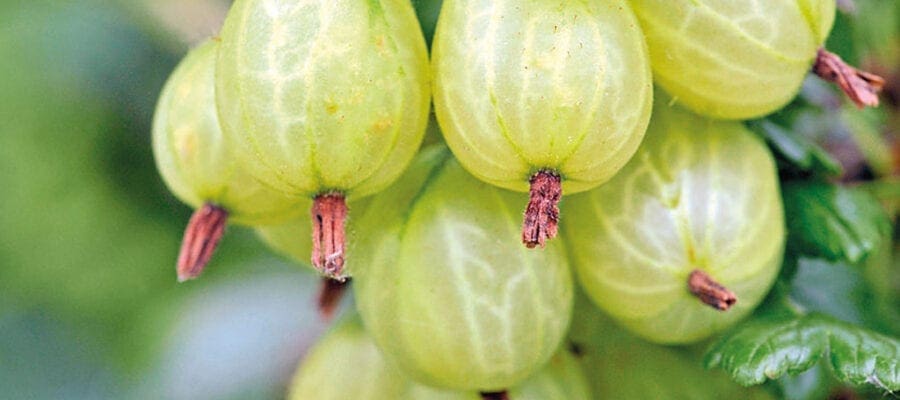Native to Europe, gooseberries have been grown in the UK for centuries. They are extremely hardy and don’t need any protection here, except from birds who will steal the ripe berries. However, the culinary varieties can be very bitter and are not to everyone’s taste.
The thorns alone can be enough to put people off since they are very sharp and always ‘bite’ whenever there is any work to be done on the plants.
This said, gooseberries are delicious in pies and jams with plenty of sugar and the dessert varieties can be very sweet if they get enough sun to fully ripen the berries.
Getting to grips with pruning (see opposite) is important if the best crops are to be produced; however, like most fruit, they will produce a small crop even if somewhat neglected.
Gooseberry varieties
Many varieties have been bred and there are competitions, once widespread, to find the largest fruit. The biggest was said to be as large as a goose egg and weighed over 50g (2oz).
There are red, yellow, green and white-berried varieties, but most common-or-garden varieties are either red or green. Of these the most commonly grown varieties include:
- ‘Invicta’ (culinary/green)
Good resistance to American gooseberry mildew, a common nuisance on these plants. - ‘Pax’ and ‘Rokula’ (dessert/red)
Modern, heavy cropping varieties with good disease resistance to replace ‘Whinham’s Industry’.

Gooseberry Growing Tips
Gooseberries prefer a deep, moist soil which is reasonably fertile, so it is well worth digging in plenty of well rotted manure or garden compost prior to planting.
Each year scatter 25-50g (1-2oz) of Growmore or pelleted chicken manure around the roots prior to adding a layer of organic matter each year in spring.
Choose a sunny site and since gooseberries flower and fruit earlier than any other soft fruit in our gardens, avoid areas at the bottom of slopes or next to solid walls or fences where cold air and frost are likely to gather early in the season forming a frost pocket.
Regular pruning is important to give the best yields. This is done in two stages in the winter and summer. Prune to maintain an open, vase shape to the bush which allows lots of air and light to reach the centre of the plant.
In winter, between October and March, cut back the shoots produced in the previous season by about half, while the side shoots arising from these are pruned back to 5cm (2in) to a point just above an outward-facing bud.
Old, diseased or damaged wood is cut out at the same time and branches on lax varieties growing close to the ground can be shortened to prevent the fruit from trailing on the soil prior to picking in June or July.
In late June the sideshoots are cut back to five leaves from their base and this removes much of the soft growth, which is likely to become infected with mildew.
Gooseberries can also be grown as cordons and should be pruned in the same way as currants. In spring look out for signs of green caterpillars with black spots.
These are the caterpillars of the gooseberry sawfly and can quickly strip the leaves from the whole plant. Pick them off if seen or spray with a suitable insecticide.
More grow guides
For more growing tips and guides, you should subscribe to Kitchen Garden – you’ll receive free seeds with every single issue too!











